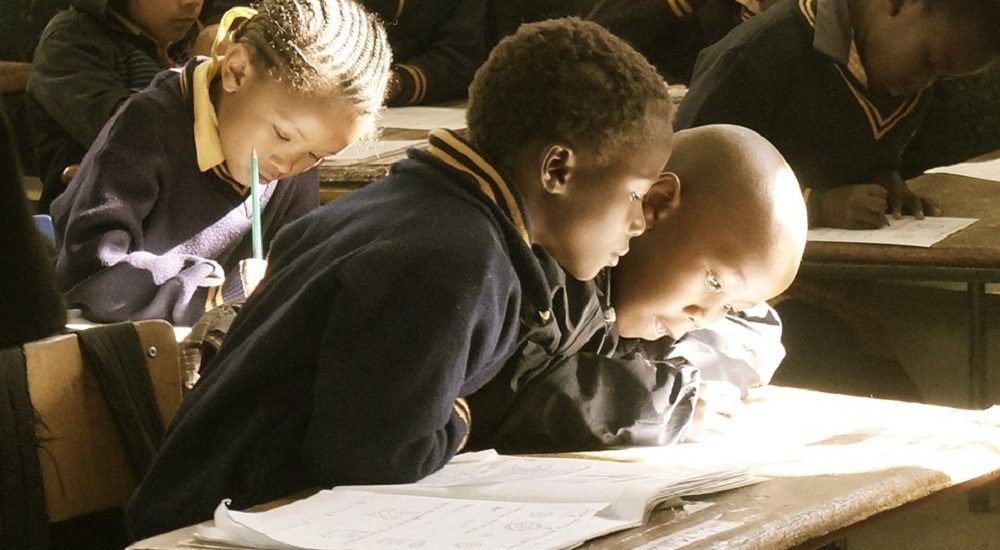International schools offer students an international education, which means that they follow a curriculum from another country. In Singapore, these foreign curricula are often based on the UK or US systems. International schools can also offer programmes that are not taught in Singapore’s Ministry of Education (MOE) schools such as American dual-language immersion programmes and British A-Levels.
Contents
- 1. International schools are schools that offer some or all of their programmes in English.
- 2. There are three types of international schools in Singapore:
- 3. There are seven different qualifications offered by international schools in Singapore.
- 4. Singapore has more than 30 international schools.
- 5. The annual fees for international schools can range from S$7,900 – S$35,000.
- 6. Foreigners studying in international schools here pay higher fees than Singaporeans or Permanent Residents.
- 7. Students at international schools can enjoy the benefits of being enrolled in a foreign curriculum and being able to study abroad.
- 8. Conclusion
International schools are schools that offer some or all of their programmes in English.
International schools are schools that offer some or all of their programmes in English. Students are taught a foreign curriculum and may be exposed to teachers from different countries, including Singapore.
Children who attend international schools have to take an entrance test before they can enrol. The entrance test is usually taken when you apply for admission into the school and it will measure your child’s ability to understand what is being taught in the classroom by means of reading comprehension questions, listening comprehension questions and writing skills activities such as essay writing or creative writing.
There are three types of international schools in Singapore:
There are three types of international schools in Singapore:
- Primary school, which goes from kindergarten to 6th grade.
- The secondary school which goes from 7th grade through 12th grade (or equivalent).
- College or university, including junior colleges and polytechnics.
There are seven different qualifications offered by international schools in Singapore.
There are seven different qualifications offered by international schools in Singapore.
The International Baccalaureate (IB) Diploma is the most common qualification and is widely accepted by universities around the world. It’s also a good choice if you plan on going to university in Asia, since many of these institutions accept IB diplomas as part of their entrance requirements.
The British GCE A-Level and American High School Diploma are also offered at some international schools here. If you want to study at an American college or university, these two qualifications can help you get there.
However, if your aim is to attend a Canadian university, then it’s best not to take either option above; instead choose either the Canadian Pre-University Programme or Singapore-Cambridge General Certificate of Education (GCE) Advanced Level instead!
Singapore has more than 30 international schools.
Singapore has more than 30 international schools. These schools are categorized into 7 regions: Asia, Middle East and Africa, Europe and Russia, The Americas, Australasia and South East Asia.
Here’s a list of international schools in Singapore:
- Anglo-Chinese School International (ACS)
- Australian International School (AIS) – Singapore Campus
- Canadian International School (CIS)
- Hwa Chong Institution (HCI) International Programme
- Northland American School
The annual fees for international schools can range from S$7,900 – S$35,000.
International school fees are determined by the school and the country. The cost of living in Singapore is higher than in other countries, so international school fees tend to be higher here as well.
The annual fees for international schools can range from S$7,900 – S$35,000. This means that if you’re planning on sending your child to an international school in Singapore, they will likely be paying much more than their peers who attend local primary or secondary schools.
Foreigners studying in international schools here pay higher fees than Singaporeans or Permanent Residents.
The reason foreigners pay higher fees is because they are not eligible for government subsidies. The fees are based on the type of school and whether or not the student is Singaporean. International schools set their own fees, so they can vary from school to school.

For example, Singaporeans pay S$2,400 ($1,835 USD) per month for a day student at Anglo-Chinese School (Independent), but international students pay S$4,500 ($3,499 USD). That’s nearly double! It’s not that international students get more education than Singaporeans; it’s just that their fees don’t include any government subsidies like national students do.
Students at international schools can enjoy the benefits of being enrolled in a foreign curriculum and being able to study abroad.
A foreign curriculum is one that includes courses and programs taught in English. This means that students are able to learn from teachers who speak English as their first language, and they can also enjoy the benefits of being enrolled in a foreign curriculum and being able to study abroad.
International schools offer more resources than local schools because they receive funding from different sources, such as government grants and donations from sponsors. As a result, international schools have more resources like updated technology and facilities for students to use.
In addition, studying at an international school can help you gain lifelong skills such as learning how to adapt yourself when living abroad or managing your time effectively with multiple commitments at hand (e.g., languages). Because these skills will make it easier for graduates who want to pursue work overseas or even settle down permanently overseas after graduation!
Conclusion
International schools offer students the chance to learn in a foreign curriculum, as well as being able to study abroad. The fees for international schools here can be quite high, but many parents feel that it is worth the money because their children will get an education that is not available in local schools.

